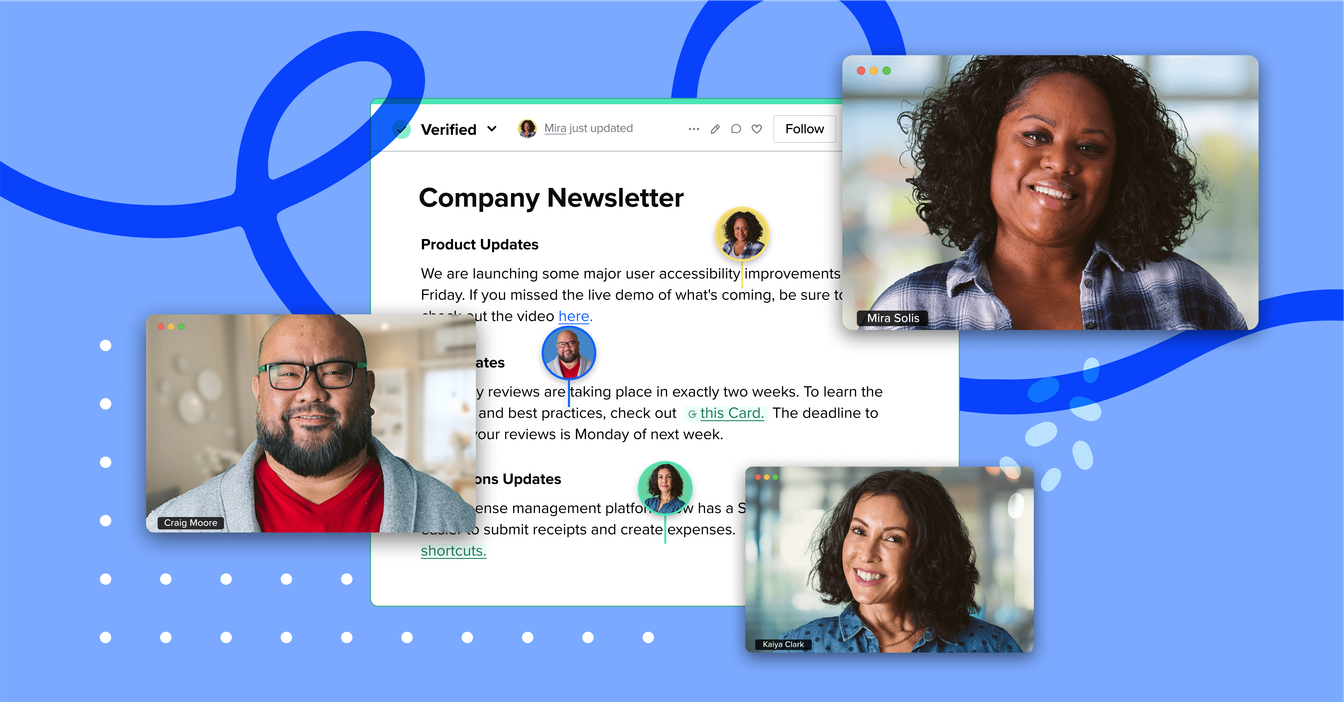Building Bridges, Not Barriers: The Art of Effective Employee Relations ไม่มีข้อสงสัยว่าบริษัทของคุณมีกลยุทธ์ทรัพยากรมนุษย์ที่แข็งแรงอยู่แล้ว แต่กลยุทธ์ของพวกเขาสำหรับการบริหารความสัมพันธ์ของพนักงานคืออะไร?
HR คือหนึ่งในแผนกที่สำคัญที่สุดในบริษัท พวกเขาช่วยในการจ้างงานและบริหารความสมบูรณ์ของพนักงานใหม่ รวมถึงการจัดการเอกสารและเอกสารสำคัญอื่นๆ และทำให้อำนาจของการสื่อสารระหว่างพนักงานและนายจ้างเปิดและสื่อสารระหว่างกันดี บริษัทของคุณอยู่ในตำแหน่งสุดยอดของงานทรัพยากรมนุษย์ แต่สำหรับความสัมพันธ์ของพนักงานล่ะ?
ความสัมพันธ์ของพนักงานคืออะไร? ความสัมพันธ์ของพนักงานเป็นคำศัพท์ที่ใช้เพื่ออธิบายความสัมพันธ์ระหว่างพนักงานและนายจ้างของพวกเขา คนที่ทำงานเรื่องความสัมพันธ์ของพนักงานสามารถเน้นการสร้างความโปร่งใสในที่ทำงาน และสร้างนโยบายที่สนับสนุนสุขภาพทางอารมณ์ ร่างกายและจิตใจของพนักงาน
ความสัมพันธ์ของพนักงาน กับ ทรัพยากรมนุษย์: ความแตกต่างที่แท้จริง บางคนใช้คำศัพท์ ทรัพยากรมนุษย์ และความสัมพันธ์ของพนักงานสลับกัน แม้ว่าอาจมีบางส่วนที่ซ้ำซ้อนกัน มันสำคัญที่จะเข้าใจว่าพวกเขาต่างกันตามแนวทางที่สำคัญ
แผนกทรัพยากรมนุษย์ เน้นในกระบวนการที่องค์กรจัดการพนักงานรายบุคคลของตนผ่านรอยชีวิตของพนักงาน ความสัมพันธ์ของพนักงานให้ความสำคัญเฉพาะอย่างไรบนความสัมพันธ์รวมขององค์การและพนักงานของพวกเขา ทีมทรัพยากรมนุษย์ส่วนใหญ่มีความรับผิดชอบที่หลากหลายซึ่งอาจจะหลากหลายมากจากการปฏิบัติตามกฎเกณฑ์กฎหมาย และการฝึกอบรมถึงการแก้ขัดปัญหา ผู้ทำงานเรื่องความสัมพันธ์ของพนักงานเน้นไปที่ใดก็ตามงานที่เน้นความสัมพันธ์ระหว่างพนักงานและนายจ้าง
ทำไม ความสัมพันธ์ ของพนักงานสำคัญ รวมถึง บริษัทที่ให้ค่าความสำคัญกับความสัมพันธ์ของพนักงาน รู้จักมีความสามารถในการชักชวนให้เข้าใจและผลักดันพนักงาน พนักงานของพวกเขามีความสุข และสร้างผลิตภารพร้อมมีระดับความไว้วางใจในองค์กรและกัน สมดุลงานและวัฒนธรรมมีแนวทางสูงที่สุดในที่ทำงานเหล่านั้น และนั้นสามารถมาใช้ที่ได้เมื่อคุณต้องการสร้างวงขนุนที่ใหม่
บริษัทที่เน้นการสร้างความสัมพันธ์ของพนักงานเท่านั้นที่สามารถได้รับประโยชน์จากงานของพวกเขา เมื่อทั้งหมดแล้วซึ่งไม่อยากใครจะต้องการมีพนักงานที่มุ่งสนใจและมุ่งเข้าสู่งานที่สำคัญ?
สร้างฝ่ายความสัมพันธ์ของพนักงานของคุณเอง เรารับสมัครให้คุณจะทราบคุณจะมีบทบาทของแผนฝ่ายความสัมพันธ์ของพนักงานแข็งแกร่งซึ่งอยู่ในที่ทำงาน คุณมีเอกสารที่มีอยู่แล้วเกี่ยวกับนโยบายปัจจุบันและวัฒนธรรมของบริษัท คุณเพียงแค่จะต้องนำมันมารวมกันเท่าที่จะสามารถทำได้ หากคุณต้องการลงทุนในความสัมพันธ์ของพนักงานไปข้างหน้านี่คือวิธีที่คุณสามารถเริ่มต้น
ในการดำเนินนโยบายที่สนับสนุน องค์กรต้องการมีนโยบายและปฏิบัติประจุกับเวลาที่ผ่านมากว่าที่อย่างที่อยู่ว่าจะช่วยให้เฝ้ารอลูกจ้างทำงานอย่างดีให้ได้ หากคุณต้องการช่วยสนับสนุนความสัมพันธ์ที่ดีในที่ทำงานอย่างสุขภงให้มีนโยบายที่เหมาะสม ทำให้มันเป็นจุดสำคัญที่ต้องทบทวนนโยบายของคุณอย่างต่อเนื่องเพื่อให้แน่ใจว่าทุกอย่างยังคงเหมาะสมสำหรับบริษัทของคุณในสถานการณ์ปัจจุบัน
ประโยชน์จากการทำค้นวิจารณ์เพื่อดูว่าที่ทำงานความเสี่ยงที่ให้เช่นอะไรและจุดประสงค์บริโภคและให้ความสนใจเปรียบเทียบกับคู่แข่ง ?? ????????????????????????????????????????????? ????????? ????????????????????????????????????????????? ????????????????????????????????????????????
?????????????????????????? ??????????????????????????????????? ??????????????????????????? ??????????????????????????????????????????? ???????????????????????????????????????????????????????????Guru?????????????? ???????????????Guru??????????????????????????????????????????????????????????????????? ?????????????????????????????????????????? ????????????????????? ?????????????????????????????????????????????????????????????????
????????????????????????????????????????????????????????????????????????????????????????? ?????????????????????????????????????????????????
?????????????? ?????????????????????????????????????????????? ?????????????????????????????? ?????????????????????????????????????????????
?????????????????????????????????????????? ?????????????????????radical candor at Guru?? ?????????????????????????????????????????????????????????????????????????????????
?????????????????????????????????????????????????????????????????????????????????????????????????????? ??????????????????????????????????????????????????????????????????????????????????????????????????????????????????????????????????????????????????????
?????????? ?????????????????????? ???????????????????????????????????????????????????????????????????? ??????????????????????????????????????????????
eNPS??????????????????????????????????????????????????????????? ????????????????????????????????????????????????????????Guru????????????????????????????eNPS?????? ????????
??????????????????????????????????????????Guru?????????????????????????? ??????????????????????????????????????????????????????????????? ?????????????????????????????????????????????????????????????????????????
ความสัมพันธ์ของพนักงานและรุ่นพี่ ตอนนี้หลังจากที่คุณมีความคิดในเรื่องว่าต้องใช้เพื่อหานโยบายความสัมพันธ์พนักงาน คุณควรเริ่มสร้างออกมา ช่วยเหลือ และ คำตอบ จะเป็นหนึ่งในพันธมิตรที่ช่วยในกระบวนการเขียนและแก้ไข ฟีเจอร์สรุปของ Assist เป็นเลิศสำหรับจัดคู่เอกสารยาวและให้ข้อมูลสำคัญสุดท้ายในทันที แน่ใจว่าลองใช้กับส่วนที่ยาวของคุณบางส่วน! ยังมีวิธีอื่น ๆ อีกมากมายที่ Guru สามารถช่วยคุณเพื่อให้งานของคุณดีที่สุด เช็คออกทัวร์ของเราเพื่อดูว่า Guru สามารถช่วยคุณอย่างไร
HR คือหนึ่งในแผนกที่สำคัญที่สุดในบริษัท พวกเขาช่วยในการจ้างงานและบริหารความสมบูรณ์ของพนักงานใหม่ รวมถึงการจัดการเอกสารและเอกสารสำคัญอื่นๆ และทำให้อำนาจของการสื่อสารระหว่างพนักงานและนายจ้างเปิดและสื่อสารระหว่างกันดี บริษัทของคุณอยู่ในตำแหน่งสุดยอดของงานทรัพยากรมนุษย์ แต่สำหรับความสัมพันธ์ของพนักงานล่ะ?
ความสัมพันธ์ของพนักงานคืออะไร? ความสัมพันธ์ของพนักงานเป็นคำศัพท์ที่ใช้เพื่ออธิบายความสัมพันธ์ระหว่างพนักงานและนายจ้างของพวกเขา คนที่ทำงานเรื่องความสัมพันธ์ของพนักงานสามารถเน้นการสร้างความโปร่งใสในที่ทำงาน และสร้างนโยบายที่สนับสนุนสุขภาพทางอารมณ์ ร่างกายและจิตใจของพนักงาน
ความสัมพันธ์ของพนักงาน กับ ทรัพยากรมนุษย์: ความแตกต่างที่แท้จริง บางคนใช้คำศัพท์ ทรัพยากรมนุษย์ และความสัมพันธ์ของพนักงานสลับกัน แม้ว่าอาจมีบางส่วนที่ซ้ำซ้อนกัน มันสำคัญที่จะเข้าใจว่าพวกเขาต่างกันตามแนวทางที่สำคัญ
แผนกทรัพยากรมนุษย์ เน้นในกระบวนการที่องค์กรจัดการพนักงานรายบุคคลของตนผ่านรอยชีวิตของพนักงาน ความสัมพันธ์ของพนักงานให้ความสำคัญเฉพาะอย่างไรบนความสัมพันธ์รวมขององค์การและพนักงานของพวกเขา ทีมทรัพยากรมนุษย์ส่วนใหญ่มีความรับผิดชอบที่หลากหลายซึ่งอาจจะหลากหลายมากจากการปฏิบัติตามกฎเกณฑ์กฎหมาย และการฝึกอบรมถึงการแก้ขัดปัญหา ผู้ทำงานเรื่องความสัมพันธ์ของพนักงานเน้นไปที่ใดก็ตามงานที่เน้นความสัมพันธ์ระหว่างพนักงานและนายจ้าง
ทำไม ความสัมพันธ์ ของพนักงานสำคัญ รวมถึง บริษัทที่ให้ค่าความสำคัญกับความสัมพันธ์ของพนักงาน รู้จักมีความสามารถในการชักชวนให้เข้าใจและผลักดันพนักงาน พนักงานของพวกเขามีความสุข และสร้างผลิตภารพร้อมมีระดับความไว้วางใจในองค์กรและกัน สมดุลงานและวัฒนธรรมมีแนวทางสูงที่สุดในที่ทำงานเหล่านั้น และนั้นสามารถมาใช้ที่ได้เมื่อคุณต้องการสร้างวงขนุนที่ใหม่
บริษัทที่เน้นการสร้างความสัมพันธ์ของพนักงานเท่านั้นที่สามารถได้รับประโยชน์จากงานของพวกเขา เมื่อทั้งหมดแล้วซึ่งไม่อยากใครจะต้องการมีพนักงานที่มุ่งสนใจและมุ่งเข้าสู่งานที่สำคัญ?
สร้างฝ่ายความสัมพันธ์ของพนักงานของคุณเอง เรารับสมัครให้คุณจะทราบคุณจะมีบทบาทของแผนฝ่ายความสัมพันธ์ของพนักงานแข็งแกร่งซึ่งอยู่ในที่ทำงาน คุณมีเอกสารที่มีอยู่แล้วเกี่ยวกับนโยบายปัจจุบันและวัฒนธรรมของบริษัท คุณเพียงแค่จะต้องนำมันมารวมกันเท่าที่จะสามารถทำได้ หากคุณต้องการลงทุนในความสัมพันธ์ของพนักงานไปข้างหน้านี่คือวิธีที่คุณสามารถเริ่มต้น
ในการดำเนินนโยบายที่สนับสนุน องค์กรต้องการมีนโยบายและปฏิบัติประจุกับเวลาที่ผ่านมากว่าที่อย่างที่อยู่ว่าจะช่วยให้เฝ้ารอลูกจ้างทำงานอย่างดีให้ได้ หากคุณต้องการช่วยสนับสนุนความสัมพันธ์ที่ดีในที่ทำงานอย่างสุขภงให้มีนโยบายที่เหมาะสม ทำให้มันเป็นจุดสำคัญที่ต้องทบทวนนโยบายของคุณอย่างต่อเนื่องเพื่อให้แน่ใจว่าทุกอย่างยังคงเหมาะสมสำหรับบริษัทของคุณในสถานการณ์ปัจจุบัน
ประโยชน์จากการทำค้นวิจารณ์เพื่อดูว่าที่ทำงานความเสี่ยงที่ให้เช่นอะไรและจุดประสงค์บริโภคและให้ความสนใจเปรียบเทียบกับคู่แข่ง ?? ????????????????????????????????????????????? ????????? ????????????????????????????????????????????? ????????????????????????????????????????????
?????????????????????????? ??????????????????????????????????? ??????????????????????????? ??????????????????????????????????????????? ???????????????????????????????????????????????????????????Guru?????????????? ???????????????Guru??????????????????????????????????????????????????????????????????? ?????????????????????????????????????????? ????????????????????? ?????????????????????????????????????????????????????????????????
????????????????????????????????????????????????????????????????????????????????????????? ?????????????????????????????????????????????????
?????????????? ?????????????????????????????????????????????? ?????????????????????????????? ?????????????????????????????????????????????
?????????????????????????????????????????? ?????????????????????radical candor at Guru?? ?????????????????????????????????????????????????????????????????????????????????
?????????????????????????????????????????????????????????????????????????????????????????????????????? ??????????????????????????????????????????????????????????????????????????????????????????????????????????????????????????????????????????????????????
?????????? ?????????????????????? ???????????????????????????????????????????????????????????????????? ??????????????????????????????????????????????
eNPS??????????????????????????????????????????????????????????? ????????????????????????????????????????????????????????Guru????????????????????????????eNPS?????? ????????
??????????????????????????????????????????Guru?????????????????????????? ??????????????????????????????????????????????????????????????? ?????????????????????????????????????????????????????????????????????????
ความสัมพันธ์ของพนักงานและรุ่นพี่ ตอนนี้หลังจากที่คุณมีความคิดในเรื่องว่าต้องใช้เพื่อหานโยบายความสัมพันธ์พนักงาน คุณควรเริ่มสร้างออกมา ช่วยเหลือ และ คำตอบ จะเป็นหนึ่งในพันธมิตรที่ช่วยในกระบวนการเขียนและแก้ไข ฟีเจอร์สรุปของ Assist เป็นเลิศสำหรับจัดคู่เอกสารยาวและให้ข้อมูลสำคัญสุดท้ายในทันที แน่ใจว่าลองใช้กับส่วนที่ยาวของคุณบางส่วน! ยังมีวิธีอื่น ๆ อีกมากมายที่ Guru สามารถช่วยคุณเพื่อให้งานของคุณดีที่สุด เช็คออกทัวร์ของเราเพื่อดูว่า Guru สามารถช่วยคุณอย่างไร
ได้สัมผัสพลังของแพลตฟอร์ม Guru โดยตรง - เข้าร่วมทัวร์ผลิตภัณฑ์ของเราอย่างแบบอินเทอร์แอคทีฟ
ไปทัวร์ 










